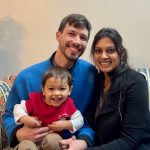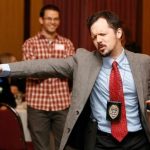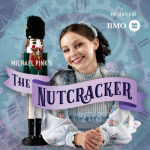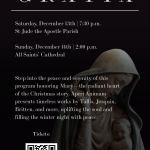India Music Society presents Amjad Ali Khan
Music generous in both time and spirit transfixed the audience Friday night, as two generations of a dynasty performed Indian classical music, folk music and original work featuring Ustad Amjad Ali Khan – De Almaas. The India Music Society presented the two-and-a-half-hour concert.
Amjad Ali Khan is an acknowledged master of the sarod, a stringed instrument similar to, but smaller than, a sitar. Khan has been playing for over 60 years. An ancestor is said to have invented the instrument. He represents the sixth generation of family musicians. Sons Amaan and Ayaan, both sarod masters, joined him on this program, along with tabla players Vineet Vyas and Anubrata Chatterjee.
The tablas added a sort of counterpoint in addition to rhythm, so rich is the array of sounds and so strong its suggestion of pitch. The varied touch of the drummer’s fingertips and the distinct character of different strike points allow all manner of sounds, from sharp cracks to low, resonant waves like a large drop splashing in a pool.
The stage set was elegant and understated. Amjad Ali Khan sat cross-legged in the middle of a riser, with Vyas and Chatterjee at opposite ends, facing each other.
The concert opened with a raga in the south Indian classical tradition. Like many of the works played, it developed languidly, beginning with the solo sarod exploring a theme and variations, gradually building and taking shape. The tablas joined in, to give a sudden rush of momentum, and the music moved ahead like a horse breaking effortlessly into a gallop.
All five joined in the final piece, and each took an impressive solo. The sons traded melodies and flourishes with their father, and often imitated him. Vyas and Chatterjee also had their moments and traded riffs back and forth. They built to a climactic ending in which all five played in a powerful unison.
In the middle of the concert, Khan let the music pause for a few moments to speak of how inspiration can mysteriously strike, as though through cosmic forces. He told of a melody that came to him at a festival in honor of Ganesh, one of the primary Hindu gods. Khan sang the long, extended melody a cappella. His rich voice filled the Pabst Theater. When he played the melody a few moments later, it was as though he were still singing, but with the voice of the sarod.






















